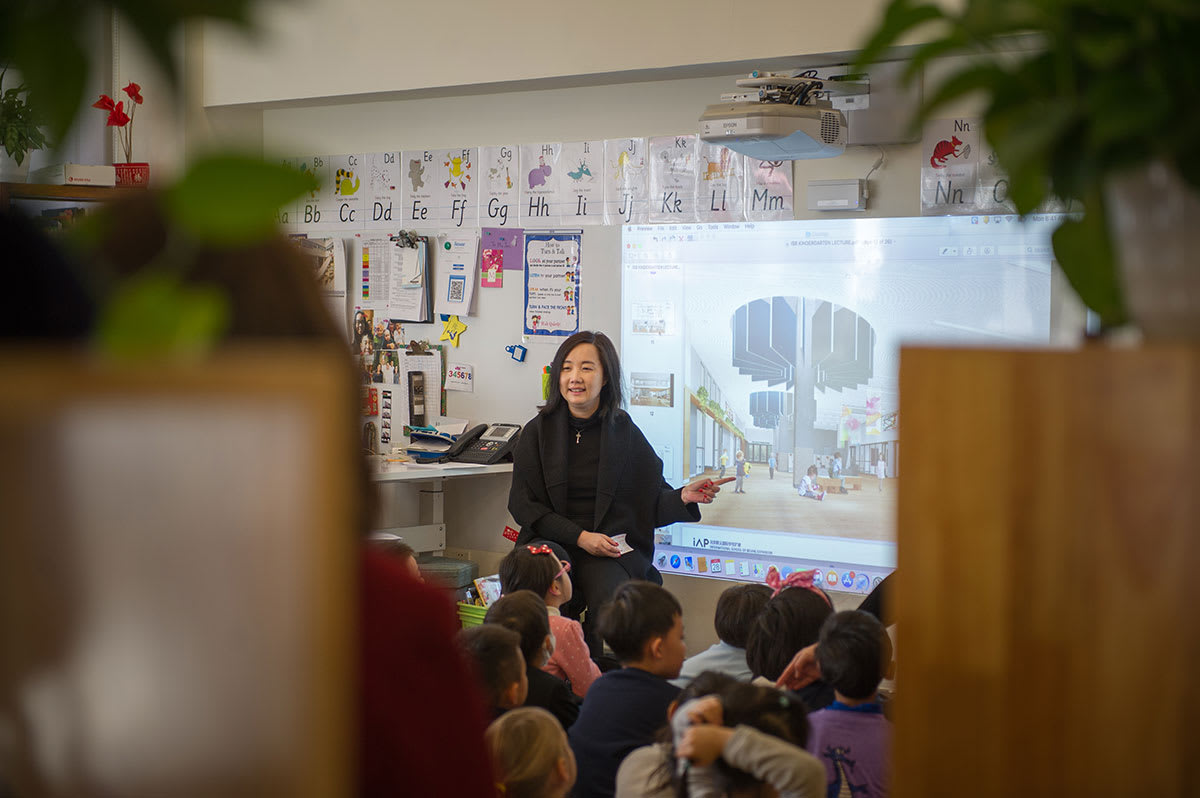Day in the life of an Elementary School class
By Alexis Smith, ISB Elementary School Instructional Coach
If you want to be amazed by all that a 5- or 6-year-old can learn about letters, sounds, patterns and more from just one tool, I suggest you stop into a kindergarten classroom.
Picture this: Eighteen young children are sitting and laying on the rug of an International School of Beijing (ISB) classroom with alphabet charts. These generally consist of the 26 letters of the alphabet and a picture corresponding to the phonic sound of each letter, but ours are missing pictures, and the children have a stack of picture tiles to add to their charts. Working with partners, they go about the task of identifying the picture, stretching out the name, catching the first sound, and matching that sound to a letter. Whew!
My work as an instructional coach involves studying the science of learning and working with teachers to consider new approaches and make lessons as effective as they possibly can be for students. As we walked around looking at the students’ work with the alphabet charts, we realized the need to be capturing this learning as it was so rich in information. One of our major projects is recording and analyzing data from classrooms so we can pitch lessons at an appropriate level and differentiate teaching for students.
At ISB, we record data in lots of different ways and for different purposes. This year, for example, we started using a new data portal – a system that connects right into our PowerSchool student information database, that we can use to pull together all the disparate sources of academic data we have about each student and present that data to teachers at a glance.

A typical Elementary School classroom at ISB
Walking around the classroom that day, I was inspired by how straightforward this data can be to gather, and at the same time how disproportionately powerful it can be. We snapped pictures of each of the students’ alphabet boards. Quick and easy – using what teachers are already doing to gather information to guide future instruction and reflect on past instruction.
By taking photos, we were able to look at partners’ speed and accuracy in the task. Several partnerships had a completed and accurate chart, indicating they had the vocabulary of the pictures, knew the concept, could apply the concept of hearing an initial sound, and then were able to connect the sound to a letter. Other partnerships were accurate but only halfway done, showing they understood and could exercise the skills but that it was not yet automatic. Still a few partnerships only had a few tiles on their boards or pictures on incorrect spots – we needed more investigation to determine if it was the vocabulary, phonological awareness, or letter sound connection that made the task challenging for these students.
On top of that, we gathered observational data on who could take turns and work with their partner. We didn’t have to interrupt or in any way weaken the lesson, just have a way to collect the data and then turn around and use it. We will take a deep look at this data in our weekly planning meeting to determine next steps for mini lessons and groups and make notes on the previous week of lessons.
Ever think what goes on in the Elementary School if frivolous fun? Think again. We continue to reflect on our work at ISB and our alignment with our faith in data. Here are some of our core beliefs about data, and how we are using it:
· The most valued data is teacher-collected formative data that is used to differentiate student learning.
· Data should be shared openly across the school to depersonalize ownership and support the faculty’s and parents’ understanding of student learning.
· Data analysis supports both student growth and further teacher improvement.
· Data is used to document student progress for the purpose of reporting, plus improving school programs.
· Collaborative teams of teachers explore data for patterns.
ISB is an extraordinary school, made so by a tradition of educational excellence spanning 40 years. Establishing, nurturing, and growing such an exceptional learning community has been and remains intentional; we work hard to build strong relationships so our learning is at its best.
